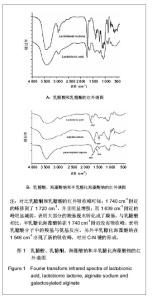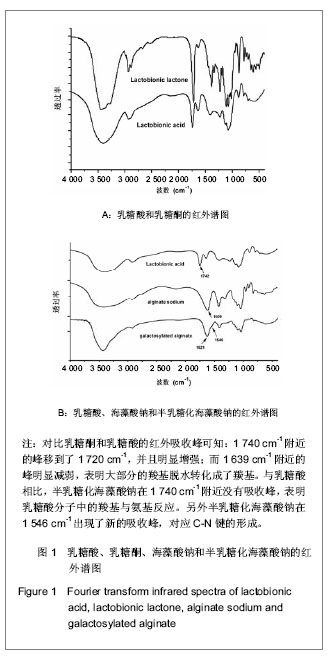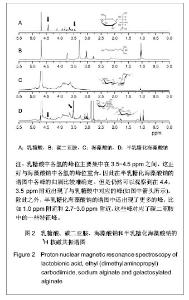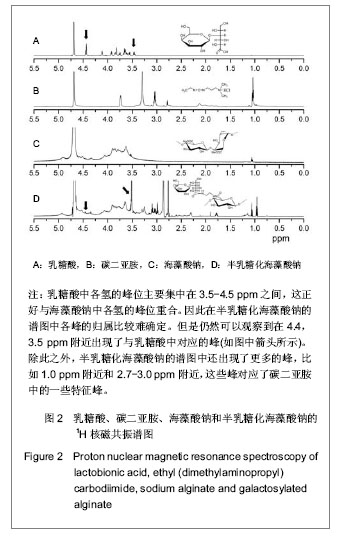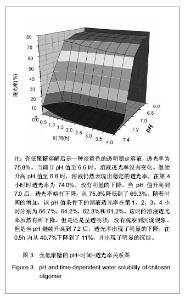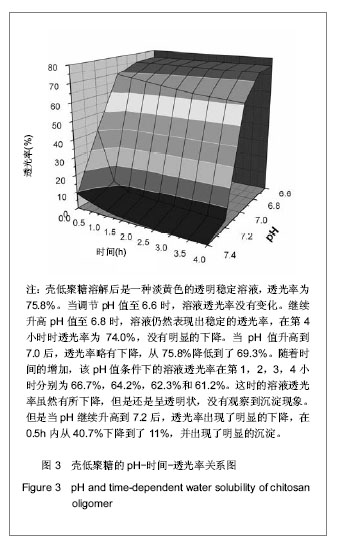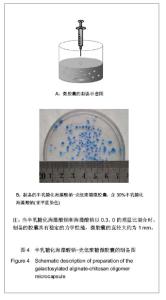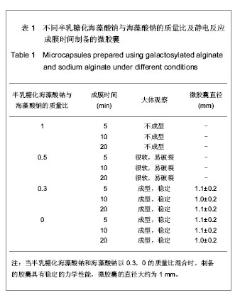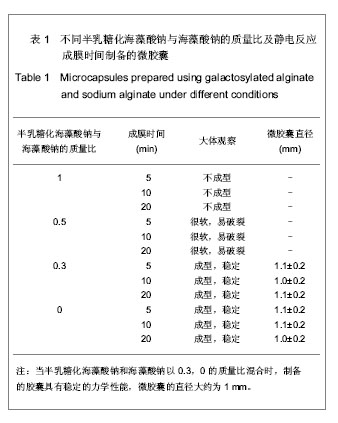| [1] Chen WJ,Yang HQ,Wang Z. Hunan Nongye Kexue.2007;37(6):70-73.陈文俊,杨虹琦,王征. 生物微胶囊技术及其应用[J].湖南农业科学, 2007,37(6):70-73.[2] Liu XD,Yu WT,Wang W, et al. Huaxue Jinzhan.2008;20(1): 126-139.刘袖洞,于炜婷,王为,等.海藻酸钠和壳聚糖聚电解质微胶囊及其生物医学应用[J].化学进展,2008,20(1):126-139.[3] Zhang SX,Liu LR. Yingyong Keji.2003;30(4):51-53.张所信,刘丽荣.壳聚糖微胶囊的制备[J].应用科技,2003,30(4): 51-53.[4] Sun AM. Microencapsulation of cells. Medical applications. Ann NY Acad Sci. 1997;831:271-279.[5] Goosen MFA,King GA,Mcknight CA,et al.Animal cell culture engineering using alginate polycation microcapsules of controlled membrane molecular weight cut-off. J Membrane Sci.1989;41:323-343.[6] Bartkowiak A,Hunkeler D.Alginate−Oligochitosan Microcapsules: A Mechanistic Study Relating Membrane and Capsule Properties to Reaction Conditions.Chem Mater. 1999; 11:2486-2492.[7] Kobayashi K,Kobayashi A,Akaike T. Culturing hepatocytes on lactose-carrying polystyrene layer via asialoglycoprotein receptormediated interactions. In: Lee YC, Lee RT, editors. Methods in Enzymology: Neoglycoconjugates part B Biomedical Applications, Vol. 247. San Diego, California: Academic Press,1994:409-418.[8] Zhang Y,Wang W,Feng Q,et al.A novel method to immobilize collagen on polypropylene film as substrate for hepatocyte culture. Mater Sci Engin.2006;26:657-663.[9] Lu HF, Lim WS, Wang J, et al. Galactosylated PVDF membrane promotes hepatocyte attachment and functional maintenance. Biomaterials.2003;24(27):4893-4903.[10] Yang MZ,Tian M,Li DX,et al. Zhongguo Zhuzhi Gongcheng Yanjiu yu Linchuang Kangfu.2009;13(25):1-4.杨明珠,田猛,李东旭,等.壳低聚糖-海藻酸钠微胶囊的制备与表征[J],中国组织工程研究与临床康复,2009,13(25):1-4. [11] Ding Z,Chen J,Gao S,et al.Immobilization of chitosan onto poly-l-lactic acidfilm surface by plasma graft polymerization to control the morphology of fibroblast andliver cells. Biomaterials. 2004;25(6):1059-1067.[12] Kim CK,Min KH,Oh YK,et al.Preparation and lectin binding characteristics of N-stearyl lactobionamide liposomes. Int J Pharm.1996;128:65-71.[13] Yang J,Goto M,Ise H,et al. Galactosylated alginate as a scaffold for hepatocytes entrapment. Biomaterials.2002; 23: 471-479.[14] Davidovich-Pinhas M,Harari O,Bianco-Peled H. Evaluating the mucoadhesive properties of drug delivery systems based on hydrated thiolated alginate.J Controlled Release.2009; 136(1):38-44.[15] Bartkowiak A,Hunkeler D. Alginate-Oligochitosan Microcapsules. II. Control of Mechanical Resistance and Permeability of the Membrane.Chem Mater.2000;12: 206-212.[16] Bartkowiak A. Effect of the ionic strength on properties of binary alginate/oligochitosan microcapsules. Colloid Surf A: Physicochem Engin Aspect.2002;204:117-124. |
